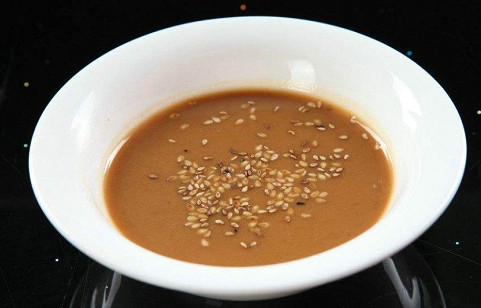Effect of different processes on the stability and rheological properties of sesame sauce
Sesame is a colloidal suspension consisting mainly of sesame oil and a hydrophilic solid suspension. In the process of producing sesame paste, after sifting, washing, frying seeds and smoking, the pre-treated sesame seeds are ground in a sauce.

Sesame sauce contains a lot of nutrients such as fats, proteins, amino acids and minerals. Sesame sauce is a solid-liquid unstable suspension system, the liquid phase is sesame oil and the solid phase is mainly denatured protein and the like. Since the hydrophilicity in solid phase is greater than that of lipophilicity, there is a phenomenon of depositing oil in the sesame sauce. To solve this problem, most of the domestic methods are to add emulsifier to improve the colloidal stability of the sesame paste.
However, as consumers' awareness of food security increases, many people are more resistant. There are related studies abroad that have a certain relationship between the stability and the size of the particles of the colloid of sesame paste, and the physical method is used to reduce the oily degree of the sesame paste. However, these documents do not examine whether a different equipment has a significant influence on the sesame particle size and the stability of the sesame system.
In this study, sesame was used as a raw material to compare the quality of the sesame sauce prepared by three different processes: stone mill, colloid mill and mill of mechanical means of microwave drying, in order to provide a reference for The production of high quality sesame sauce with different needs. As the manufacturing process must be continually improved and improved, it is very important to study the stability and rheological properties of the oil sauce by factors such as the size and temperature of the sesame sauce. Many consumers report that the taste of sesame paste with skin is bitter, which may be due to the large amount of oxalic acid in the sesame shell and the raw fiber that is not conducive to digestion and absorption of the human body, and The combination of oxalic acid and calcium affects the absorption of calcium by the body. Therefore, this article also compares the quality of the peeled sesame paste and the skinless sesame paste.
Different processes have some impact on the physical and chemical indicators of sesame paste, especially in terms of particle size and stability. The media mill has the smallest particle size of 3.87 μm. Compared to the colloid mill and the stone mill, the medium-grinding sesame paste has the best stability, reaching 90.14%.
Compared to the stone mill, the medium sesame pasta machine began to appear fat up and down for almost 20 days. The composition of the fatty acids and the lignin content are not very different, and the VE content of the stone-ground sesame paste is the highest. Compared to ordinary sesame sauce, peeled sesame paste has a low crude fiber content and a low oxalic acid content, and these substances are not conducive to digestion and absorption by the human body. The raw fat content is high and the raw protein is not very different, so it is a new type of sesame sauce that is worth developing.
The rheological characteristics of the different sesame paste processes are also different. The different particle sizes have a great influence on the viscosity of the sesame paste. The smaller the particle size, the lower the viscosity. On the contrary, the higher the viscosity. The experiment shows that the viscosity of the media mill is lower and the viscosity of the stone mill is the highest. The temperature difference has a significant effect on the viscosity of the sesame paste. The higher the temperature, the lower the viscosity.